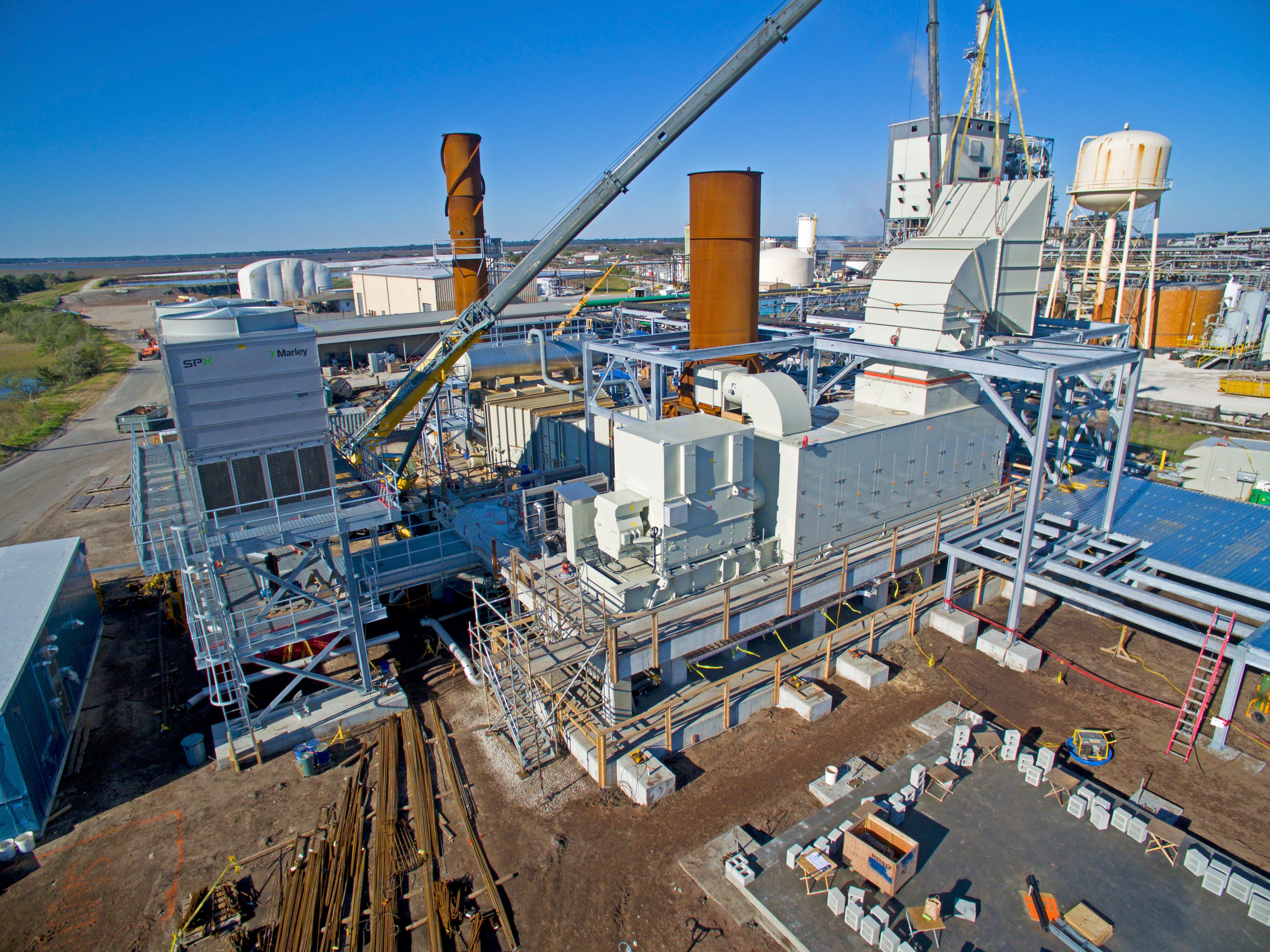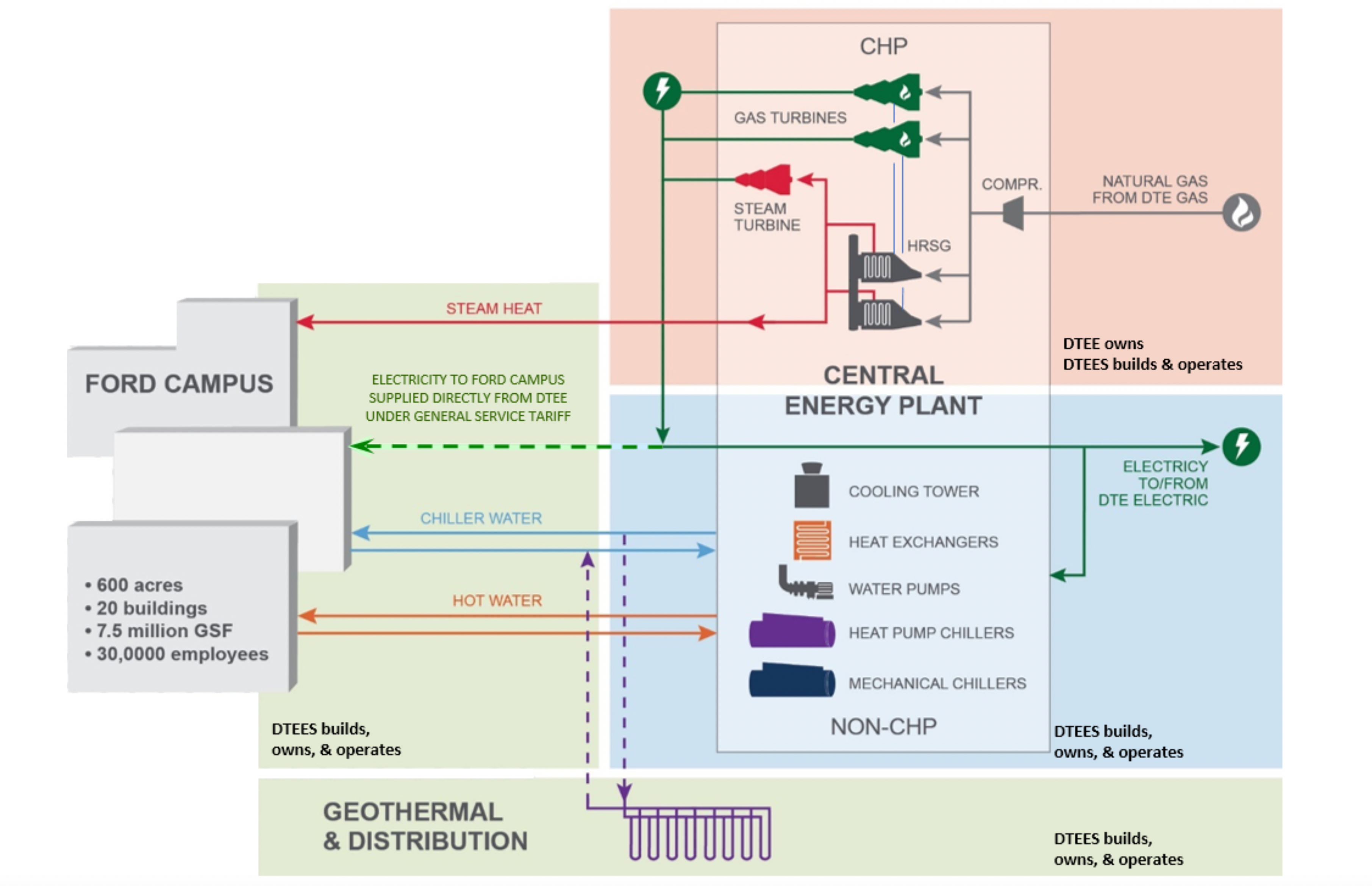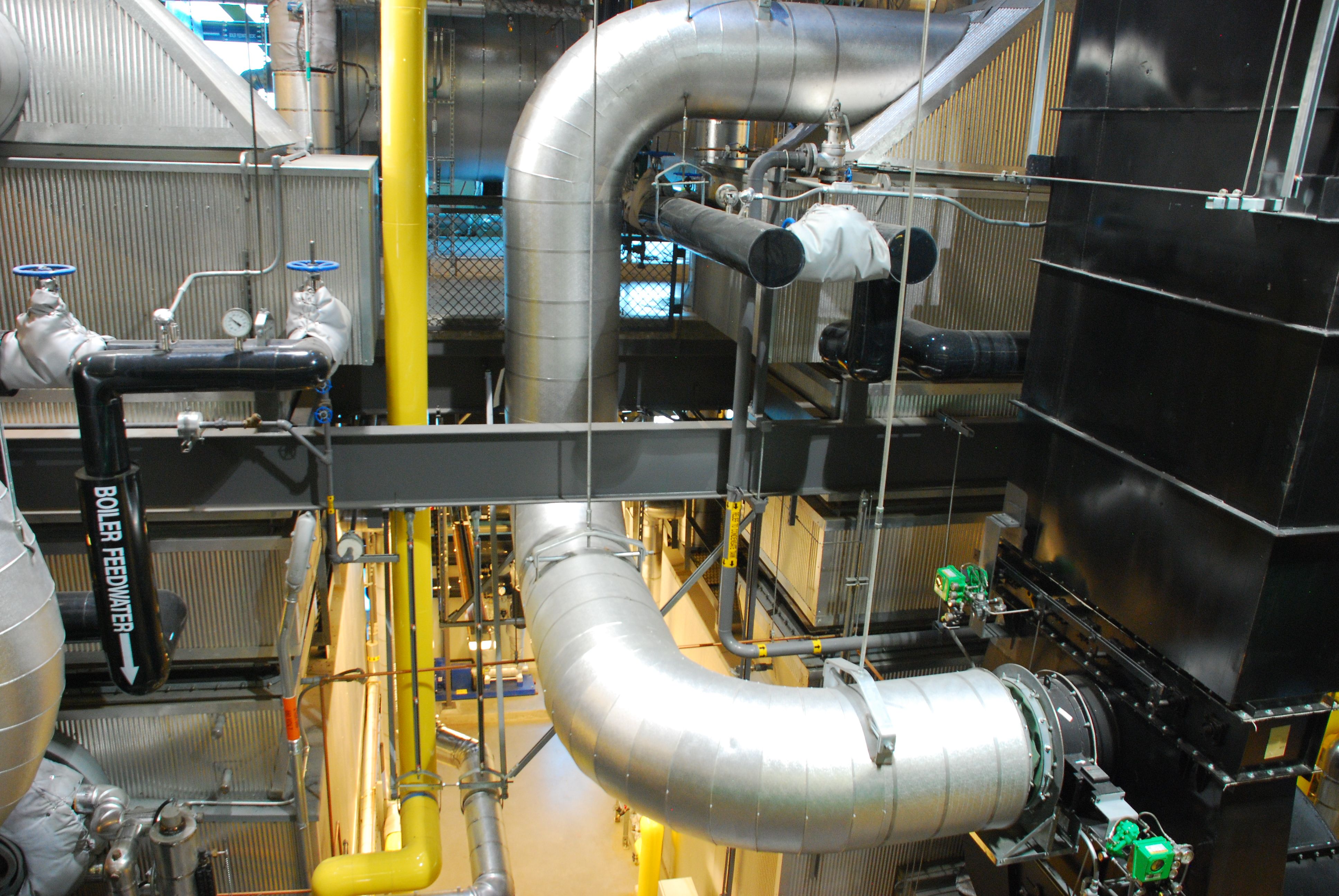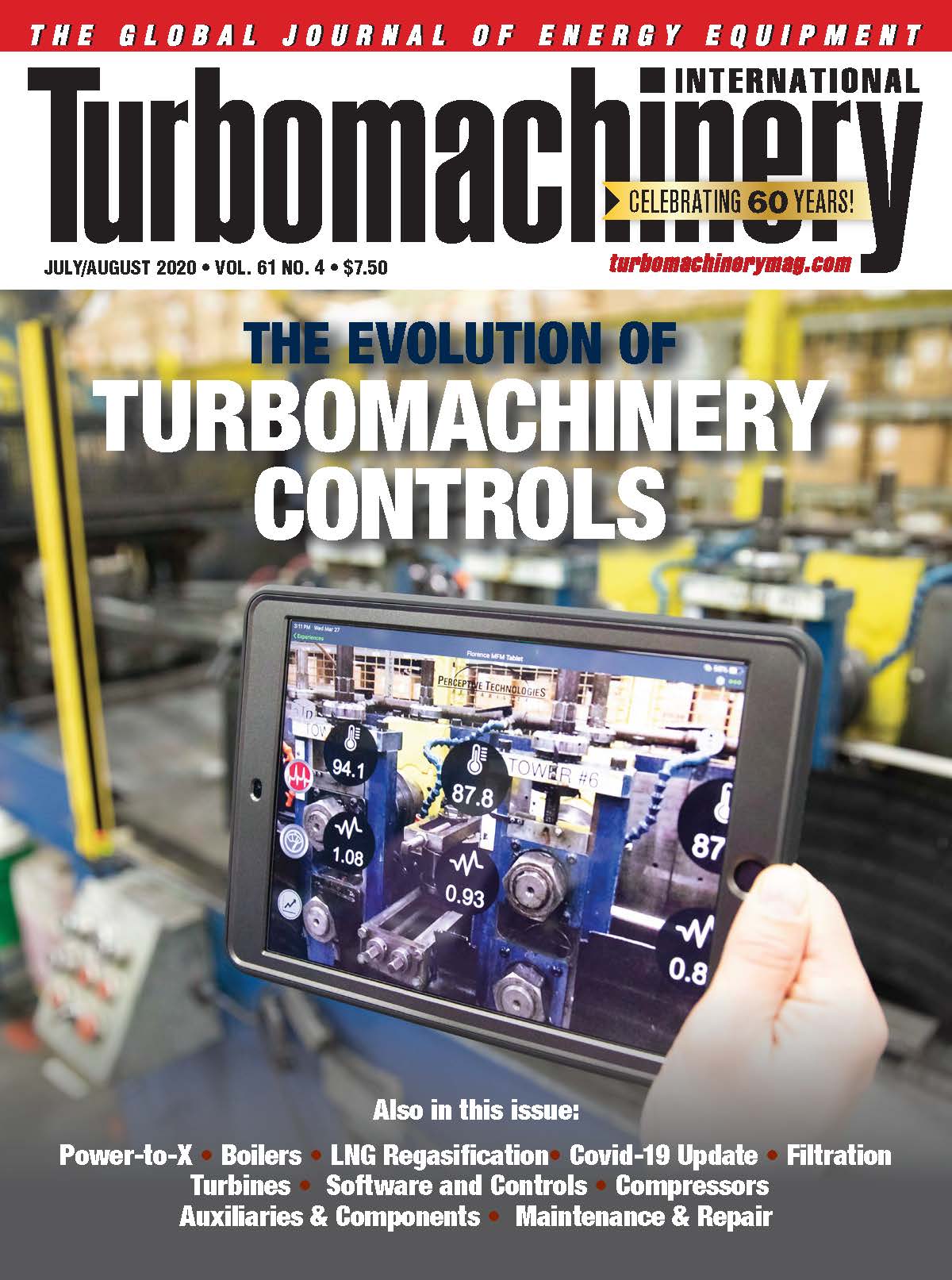Boiler best practices: Boiler upgrades and HRSG installations require care

Cogeneration plant undergoing extensive upgrades.[/caption]
There are many aging boilers out there in urgent need of replacement. Whether they are in refineries, power plants or combined heat and power (CHP) facilities, there are many factors to take into account in boiler or Heat Recovery Steam Generator (HRSG) selection, installation, cost and maintenance.
Boiler selection
Some sites are suitable for a package boiler fabricated in a factory and shipped to the site for installation. Their standardized sizes don’t fit the needs of some refineries and power plants, but those that can make them work often gain a good boiler at lower cost.
Beyond a certain size, though, it becomes prohibitive to ship packaged boilers. That’s where stick-built (or customized) boilers come in. They are tailored to the individual facility, with components shipped to the site where they are assembled and welded. They are more expensive and take longer to install as they are made to specific site and process conditions.
A hybrid approach combines elements of package and stick-built boilers. Design is done to facility specifications. It is preassembled and tested at the manufacturer’s site before being transported in one or more pieces for installation and commissioning. This greatly reduces the amount of onsite construction work that needs to be done, hence their lower cost compared to stick-built alternatives.
A large ethanol plant in the U.S., for example, needed a boiler to that could provide 290,000 lbs of steam per hour at 250 psig and 555°F of superheat. It also needed to rapidly ramp up or down in response to demand. Rapid ramping requires a maximum heat release of less than 80,000 Btu per hour per cubic foot, which places a limitation of about 200,000 pounds per hour on the size of unit that can be shipped. A hybrid approach was preferred.
The convection section, and the mud and steam drums were manufactured and shipped to the field for installation. The tubes were attached in the field. The boiler can ramp from 20% to 100% load in about five minutes without breaking down due to thermal stress. Oversized downcomers are positioned out of the heat path. This eliminates deviation from nucleate boiling where steam goes up the downcomers and fights with the water coming down (a common cause of rupture).
Sizing considerations
Large power plants, refineries and petrochemical facilities can cost tens and even hundreds of millions. A boiler represents a tiny fraction of overall costs. But an unreliable boiler or problematic HRSG can bring the facility to a standstill.
Sizing boilers with little margin, therefore, may be ill-advised. Smaller boilers that constantly run near capacity may be cheaper, but reliability eventually becomes an issue due to constant wear and tear. They may suffer from water carry over from the steam drum to the superheater. Eventually the superheater blows out.
To minimize unscheduled downtime, it is generally advisable to specify large furnaces, steam drums and oversized boilers. A larger steam drum offers more separation to more easily remove water from the steam before it arrives at the superheater. And in the event of loss of feedwater flow, a large steam drum provides operators with valuable minutes to address the situation before steam levels fall and a trip is triggered.
By running the boiler well below capacity, the likelihood of a breakdown is greatly lowered. Warranty problems can also be avoided. A more conservative approach to specification helps the facility gain a more reliable boiler for a small increase in cost. In the long run, it usually turns out to be far cheaper than trying to keep a smaller boiler constantly running at or near capacity.
Take the case of the new CHP plant at Ford’s Dearborn, Michigan campus. It was originally specified at 23 MW to include two Solar Mars 100 gas turbines and a 3 MW condensing steam turbine. While this meant lower capital and operating costs, it didn’t allow for fluctuating steam and electricity requirements, or future expansion. In partnership with developer DTE Energy, Ford opted for a larger facility that could generate enough electricity to be sold externally.
A new design called for two 14.5 MW Solar Titan 130 gas turbines, a 5 MW condensing steam turbine from Siemens and Rentech HRSGs. The facility is designed to produce heating, steam and electricity for internal use as well as feeding the grid. The 34 MW, 370 k-lb/hr steam CHP plant offers enough steam load for Ford, and optimized sizing to provide electricity for the grid. Ford gains long-term contracts for steam and power from DTE as well as an on-site generation, greater energy efficiency and lowered emissions.

Emissions changes
Older boilers are often a source of regulatory concern. When upgrading or adding a new boiler, the specification of larger furnaces is a good way to curtail emissions and minimize problems with flame impingement. Selective Catalytic Reduction (SCR) and LoNox burners can also lower NOx production.
Coal-burning and simple cycle gas turbine facilities in some areas face new regulations that severely limit emissions. California, for example, has set targets to reduce greenhouse gas (GHG) emissions to 40% below 1990 levels by 2030. It includes a 20% reduction in emissions from oil refineries. This is forcing many to replace older coal-fired boilers. Those that desire onsite power as well as process steam are switching to natural gas-fired combined cycle plants. This requires the addition of an HRSG.
Example: Morning Star Packing is a California-based producer and packager of tomato-ingredient products. It decided to install new boilers, combustion systems, and an SCR system at one facility to double steam production while lowering NOx emissions. Morning Star opted for two boilers from Rentech with register burners and an SCR system by John Zink Hamworthy. The register burners brought NOx levels down to less than 30 ppm, which the SCR then reduced to 5 ppm. Boiler efficiency was raised from below 80% to around 85%, thereby lowering fuel expenditure.
Design for the site
No two refineries or power plants are identical. Equipment and products produced can vary considerably. One facility may require an abundance of steam from a boiler that follows steam load and can fire up or down on demand. Another site demands recovery of waste heat to raise efficiency and lower emissions. And a third may suffer from severe space constraints that limit options. Thus, a cookie-cutter approach to specification can lead to problems. The owner requirements, the needs of the process and the conditions of the site should ultimately determine the boiler selected.
An east coast refinery serves as a case in point. It had to deal with new regulatory requirements to install expensive emissions equipment to cut NOx and SO2 emissions. This included leak detection and repair, SCR, Continuous Emissions Monitoring Systems (CEMS), reduction and eventual elimination of fuel oil burning, and ultra-low NOx burners to help bring NOx emissions below 0.040 lb per mmBTU.
An important part of meeting its refinery steam requirements was the replacement of older boilers with two more efficient units that brought emission levels to the required range. These units came with water-cooled membranes, accelerated natural circulation of the water, and burners that could use natural gas or refinery gas. Each boiler could deliver 250,000 lb/hr of superheated steam at 575 psig and 730º F. In conjunction with all the other emissions control technologies, this brought NOx emissions down to 2 PPM, CO to 20 PPM and NH3 slip to 5 PPM.
Another design feature specific to this site was redundancy. Each boiler can produce enough steam to run the entire plant, with the other on hot standby. Each has dual fans as well as monitoring and safety systems. Each boiler comes 1,200 RPM forced draft fans from Robinson Industries driven by a Dresser-Rand steam turbine with a Lufkin gear. The turbines are controlled by a Woodward electro-pneumatic governor with a Flowserve Valtek pneumatic actuator.

Every site has a different layout and different needs. Boilers must be tailored to those needs.[/caption]
Lowering operating costs
Aging household appliances are far less efficient than the latest models. Similarly, aging boilers, some dating back to the early days of the Cold War, can be costly to run and have higher emissions. By adding high-efficiency, natural gas boilers, fuel costs can be slashed and emissions lowered.
The reason for such gains is the evolution of technology. The latest generation of equipment comes with features such as SCR and LoNox burners integrated into the boiler. Modern designs lower the amount of refractory, so operators don’t need to worry about replacing refractory seals or rebuilding refractory walls. Additionally, placement of the superheater in the convection section protects it from hot exhaust gas, boosts reliability and extends lifespan.
Oregon State University (OSU), for example, replaced aging boilers with a CHP plant. The new facility consists of a combustion turbine from Solar Turbines, an HRSG, an Elliott steam turbine and two auxiliary boilers. This provides all the steam as well as half of the electrical needs of the 570-acre OSU campus located in Oregon.
The central steam plant hadn’t been upgraded since 1948. The replacement facility had to comply with Oregon’s State Energy Efficiency Design (SEED) i.e., exceed code efficiency requirements by at least 20%, and lower emissions. The campus uses absorption chillers, so there is little fluctuation in electricity demand throughout the year. Steam is used for heating, cooling and humidification the buildings, providing hot water, sterilizing greenhouse soil and lab experiments.
The new CHP facility consists of a 5.5 MW Solar Taurus 60 engine that can run on multiple fuels (natural gas, distillate, biodiesel or methane), a Rentech HRSG with a preheater, duct burners from R&V Engineering, two auxiliary package boilers with LoNOx burners, each capable of 85,000 lbs of 200 psig steam per hours, a 1 MW Elliott backpressure steam turbine generator, and an Emerson Delta V control system. The plant can produce up to 6.5 MW of electricity and up to 280,000 lbs. of steam per hour. By switching from utility to onsite power, the university estimated annual savings of more than half a million dollars.

Newsletter
Power your knowledge with the latest in turbine technology, engineering advances, and energy solutions—subscribe to Turbomachinery International today.
